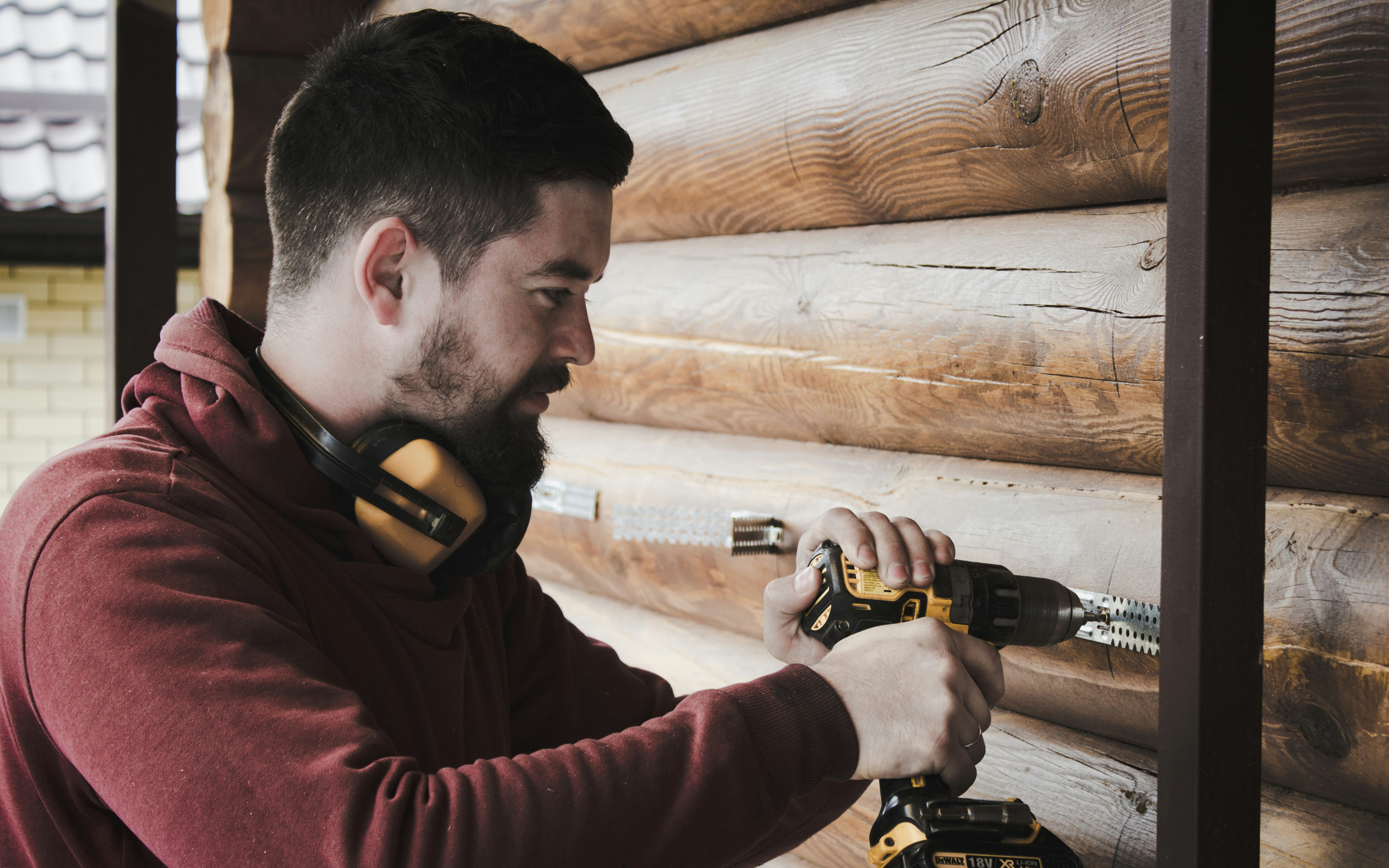
Handy Home Design Planning Checklist for Future Homeowners
Building a dream home can feel overwhelming, especially when planning the design. Many homeowners struggle to know where to start or how to manage essential details. This blog post will provide a handy home design planning checklist, covering key elements like defining your vision, choosing materials, and prioritizing energy efficiency. Readers will gain clarity and direction in their home design journey, addressing common concerns about complexity and ensuring a streamlined process. With expert tips and a structured approach, this checklist will make the planning phase more manageable and enjoyable.
Key Takeaways
Identifying style preferences helps shape decisions in creating a dream home.
Setting a realistic budget ensures financial comfort throughout the custom home-building process.
Understanding local building regulations is essential for compliance and avoiding costly changes.
Planning for future needs enhances the home's functionality and accommodates lifestyle changes.
Selecting quality materials guarantees longevity and maintenance ease for a comfortable living space.
Defining Your Vision for the Dream Home

Identifying style preferences is the first step in crafting a dream home that reflects personal taste. Next, setting a realistic budget ensures financial comfort during the building process. Understanding local building regulations is crucial for compliance, while considering future needs, such as accommodating wheelchair access or planning for a lawn and fence, enhances long-term satisfaction. Each of these elements plays a vital role in achieving a well-rounded vision for a custom home.
Identifying Your Style Preferences
Identifying style preferences is essential for anyone working with home builders to create a dream home. Understanding personal tastes, whether it be modern architecture or rustic charm, allows for better decision-making when selecting features like a sleek stove or a luxurious shower. By focusing on energy-efficient options and design elements that resonate with individual lifestyles, home buyers can shape a space that truly feels like home.
Setting a Realistic Budget
Setting a realistic budget is a fundamental step in the journey of custom home building. By outlining expected costs, from quality countertops to energy-efficient ventilation systems, homebuyers can manage their finances better. Considering sustainability in choices can enhance long-term savings, as investing in proper heating systems can lower energy expenses significantly:
Assess your financial capacity and outline key expenses.
Include costs for materials like sustainable countertops and insulation.
Account for fees associated with permits and local regulations.
Plan for future expenses related to maintenance and upgrades.
Understanding Local Building Regulations
Understanding local building regulations is essential for anyone planning their dream home. These regulations guide aspects like landscape design, vehicle access, and basement use, ensuring safety and compliance. Homebuyers should pay attention to building codes that dictate porch sizes and garage door specifications to avoid costly adjustments later:
Research zoning laws affecting property layouts.
Review specifications for garage door sizes and styles.
Consult codes regarding landscape modifications and drainage.
Ensure designs for basements meet local safety standards.
Considering Future Needs
Considering future needs is essential when planning a dream home, ensuring the space remains functional and accommodating over time. Homebuyers should consider elements such as wood flooring, which can withstand renovations, or easy-to-clean carpets for comfort. Incorporating features like smart sensors for lighting and security during construction can also enhance convenience and energy efficiency, making the home ready for various lifestyle changes.
Core Elements of the Home Design Planning Checklist

Preparing a detailed floor plan is the first step in developing a custom home, ensuring spaces are functional and cater to everyday transport needs. Selecting essential rooms and their functions, like living areas and bedrooms, sets the foundation for comfort. Integrating outdoor spaces such as patios enhances the living experience while planning for accessibility ensures that features, like tile flooring, accommodate everyone, including those with mobility challenges.
Preparing a Detailed Floor Plan
Preparing a detailed floor plan is a crucial aspect of building a custom home. It allows homeowners to visualize the layout, ensuring that essential areas, such as the bathroom and living spaces, are functional and comfortable. Custom home builders can help create a design that optimizes space while incorporating features like a recycling area to minimize landfill waste, promoting sustainability in daily living.
Selecting Essential Rooms and Their Functions
Selecting essential rooms and their functions is fundamental when creating a dream home. Homebuyers should consider key spaces such as a pantry for organized storage, cabinetry for efficient use of limited areas, and a cozy fireplace to enhance the living room ambiance, especially in the south, where warmth is appreciated. Including well-placed shelves can increase both functionality and style, ensuring each room meets its specific needs:
Plan for a multifunctional kitchen with ample pantry space.
Design cabinetry that complements the home's overall aesthetic.
Incorporate a fireplace in the living area to create a focal point.
Install shelves for decorative and practical storage solutions.
Integrating Outdoor Spaces
Integrating outdoor spaces into home design is essential for creating a harmonious living environment. Homeowners can expand their dining room experience by adding a spacious deck or patio, making it a perfect spot for meals and gatherings. Features like a hot tub can enhance relaxation while ensuring proper air conditioning flow and maintaining comfort in adjoining areas, such as the living room. Thoughtful placement of stairs can improve accessibility, seamlessly connecting indoor spaces with the outdoor retreat.
Planning for Accessibility
Planning for accessibility in home design involves thoughtful consideration of infrastructure that accommodates everyone. Features like wider doors and ramps can ensure smooth access throughout the space, while strategic wall placements can enhance maneuverability. Using materials that contribute to energy efficiency, like a well-insulated roof, can lower carbon footprints and provide a comfortable living environment for all occupants.
Choosing Materials and Finishes

Choosing the right materials and finishes is essential in home construction. First, exploring sustainable building options contributes to eco-friendly homes. Evaluating current interior design trends ensures the spaces, like the kitchen and bedroom, feel modern. Finally, selecting durable and functional materials for areas such as the laundry room and closet guarantees longevity and ease of maintenance, enhancing overall home comfort.
Exploring Sustainable Building Options
Exploring sustainable building options is a smart choice for home design, as it benefits both the environment and homeowners. For example, selecting energy-efficient materials for fixtures like sinks or doors can help reduce energy use over time, lowering utility bills. In essence, every choice made, from the type of insulation to eco-friendly appliances, contributes to a greener home and a sustainable future.
Evaluating Interior Design Trends
Evaluating interior design trends is vital for creating a space that feels current and inviting. Homebuyers should focus on popular materials and finishes that not only complement personal style but also enhance the overall functionality of the home. For instance, choosing open shelving in kitchens can improve space efficiency while adding a touch of modern flair; staying updated on color palettes can keep interiors fresh and stylish.
Selecting Durable and Functional Materials
Selecting durable and functional materials ensures a long-lasting and comfortable home. Homebuyers should consider materials such as quartz countertops and hardwood flooring that not only withstand the wear of daily life but also offer aesthetic appeal. Investing in high-quality finishes, like energy-efficient windows, can lead to lower maintenance costs and improved energy efficiency over time:
Choose materials that are both stylish and resilient.
Opt for energy-efficient options to save on utility bills.
Prioritize finishes that enhance the functionality of each space.
Prioritizing Energy Efficiency

Implementing insulation strategies plays a key role in maintaining a comfortable and energy-efficient home. Choosing energy-efficient appliances further reduces utility costs while optimizing performance. Additionally, exploring renewable energy options can enhance sustainability. Each aspect contributes to a well-designed dream home that prioritizes energy efficiency, ensuring long-term savings and comfort for all occupants.
Implementing Insulation Strategies
Implementing insulation strategies is vital for creating a home that is both energy-efficient and comfortable throughout the seasons. Selecting high-quality insulation materials, such as foam or fiberglass, helps to minimize heat loss in winter and keeps spaces cool during summer. Ensuring proper installation is equally important, as gaps or poorly fitted insulation can lead to increased energy costs, negating the benefits of energy-efficient design:
Choosing Energy-Efficient Appliances
Choosing energy-efficient appliances is a smart move for anyone planning their dream home. These appliances not only reduce utility bills but also minimize environmental impact. For instance, selecting ENERGY STAR-rated products ensures optimal performance while conserving energy, making them cost-effective in the long run and a great addition to a sustainable lifestyle.
Exploring Renewable Energy Options
Exploring renewable energy options is a vital step in designing a sustainable dream home. Incorporating solar panels can significantly reduce electricity costs while harnessing the sun's power for daily needs. Homeowners might also consider wind turbines or geothermal systems, which can provide efficient heating and cooling solutions, enhancing their home's overall energy efficiency and environmental impact.
Finding the Right Professionals

Finding the right professionals is essential for a successful home design journey. Researching architects and designers helps ensure creativity aligns with personal style while hiring experienced contractors guarantees quality craftsmanship. Setting clear communication channels promotes smooth collaboration and efficiently addresses questions and concerns. Each of these steps lays a strong foundation for effectively achieving the dream home.
Researching Architects and Designers
Researching architects and designers is a key step in building a dream home. Homebuyers should look for professionals whose portfolios showcase styles that align with their vision. Engaging in conversations with potential candidates allows clients to assess compatibility and communication styles, ensuring a smooth collaboration throughout the home design process.
Hiring Experienced Contractors
Hiring experienced contractors is vital for the success of custom home building. By selecting professionals with a proven track record, homebuyers can ensure quality craftsmanship and timely project completion. To streamline the process, clients should evaluate contractors based on their past work, customer reviews, and communication ability, ensuring that their vision is translated accurately into reality.
Setting Clear Communication Channels
Establishing clear communication channels is essential when working with designers and contractors throughout the custom home-building process. Regular check-ins and updates foster a collaborative environment, allowing homebuyers to express ideas and promptly address concerns. Utilizing tools like project management apps can streamline communication, ensuring everyone stays informed and aligned, ultimately leading to a smoother journey in achieving the dream home.
Reviewing and Finalizing the Home Design

Conducting a checklist review session is crucial for ensuring that all design elements align with the dream home's vision. After gathering feedback, making adjustments helps refine the plans further. Finally, preparing for the construction phase involves confirming all details are finalized, leading to a smooth building process. Each step is essential in turning the dream home into reality.
Conducting a Checklist Review Session
Conducting a checklist review session is a vital step in ensuring that all elements of the home design align with the homeowner's vision. During this session, all parties can discuss essential features, such as room layouts and finishes, to confirm they meet expectations. By gathering feedback and making necessary adjustments, homeowners can move confidently into the construction phase, knowing every detail has been meticulously addressed.
Making Adjustments Based on Feedback
Adjustments based on feedback are an essential part of refining the home design. Homebuyers should actively engage with their contractors and designers to discuss any changes that could better reflect their vision. This iterative process not only helps ensure that the final layout works harmoniously but also addresses potential concerns before construction begins.
Review all design elements with your team.
Gather input from family or friends to gain fresh perspectives.
Make necessary adjustments to room layouts or finishes.
Confirm that all changes align with budget constraints.
Finalize the design before proceeding to the construction phase.
Preparing for the Construction Phase
Preparing for the construction phase involves ensuring that every detail matches the homeowner's vision before breaking ground. This includes double-checking the finalized plans and confirming that materials are in place and ready to go. Clear communication with builders about timelines and expectations helps keep the project on track, allowing for a smooth transition from planning to actual construction.
Conclusion
A comprehensive home design planning checklist is crucial for turning the dream home into reality. By defining style preferences, setting a realistic budget, and understanding local regulations, homebuyers create a strong foundation for their projects. Incorporating accessibility and future needs ensures that the space remains functional over time. With careful planning and communication, every step leads to a successful and satisfying custom home-building experience.


